What happens when your weight loss slows to a crawl, or even stalls, while taking Mounjaro, Ozempic, Wegovy, or Zepbound? Is that supposed to happen? Is it going to be permanent? What do I do to kick-start weight loss off again?
A Glimpse Into Our Metabolism
It’s an interesting experience, this weight loss stuff with our GLP-1 medications. Whether it is if we have Type 2 Diabetes and taking Trulicity, Ozempic, or Mounjaro, or are using Wegovy or Zepbound for weight loss, the journey can be confusing.
Why do some people lose lots and others not so much? Why do some people go the slow and steady route while others lose in chunks and stop for what seems like ages?
One very important point is research shows those with diabetes have a slower weight loss than those who do not. Does that mean you will struggle more if you are a Type 2 diabetic? Perhaps, but not always.
The most important thing to remember is every body is different. Not just everybody, but every body. Our bodies all have different caloric needs. The body we inhabit has different caloric needs depending on the season of our lives, how well we are on any given day, and even what we are doing throughout the day.
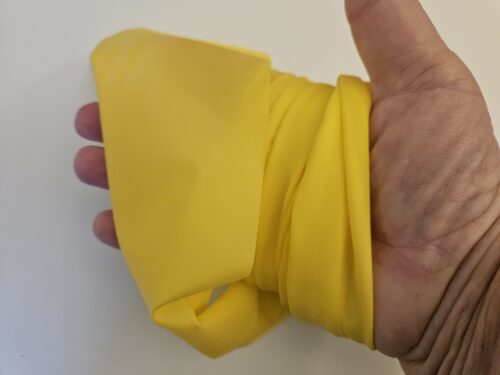
Herman Pontzer, in “New Human Metabolism Research Upends Conventional Wisdom about How We Burn Calories,” says:
Our bodies are wonders of coordinated chaos. Every second of every day, each of your 37 trillion cells is hard at work, pulling in nutrients, building new proteins and doing the myriad other tasks that keep you alive. All of this work takes energy. Our metabolism is the energy we expend (or the calories we burn) each day. That energy comes from the food we eat, and so our metabolism also sets our energy requirements. Calories in, calories out.
The above article, in Scientific American, continues:
Evolutionary biologists often think about metabolism as an organism’s energy budget. Life’s essential tasks, including growth, reproduction and bodily maintenance, require energy. And every organism must balance its books.
Pontzer explains that every age and exertion level as well as our very size all determines what our bank balance… our metabolism… will act like.
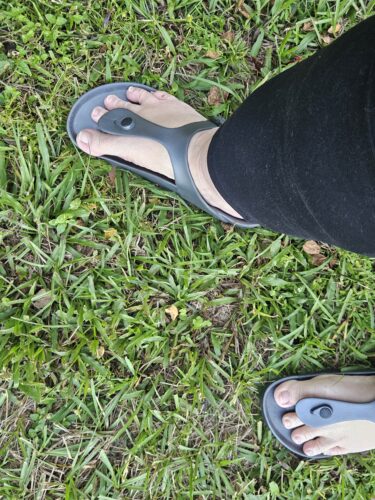
Metabolism Rates Compared (It’s Relevant)
A younger person on GLP-1s might lose faster because they have a faster metabolism. Unless they have obesity, then their metabolism will likely be slower. Why? Because there are more calories in to burn as well as, a typical trait of those with obesity, less movement using the body that burns those extra calories.
If we look at a farmer versus a computer programmer, who will burn more calories? Whose metabolism is going to be faster and more efficient? The farmer, of course.
Taking several examples at once: a person with COVID, someone with cancer, a pregnant woman, a woman in perimenopause, a man with a broken leg, a high jumper, a busy parent hustling kids to and from school and events, a telephone operator… and on and on.
You can easily see the metabolic needs differ for each person. That doesn’t even take into account their weight, what they eat, how often, their movement needs (aka exercise), social status, race, community/country they live in, and a million more variables we would never know how to factor in.
So, Why Would Weight Loss Stall With GLP-1s?
Looking at the amount of reasons our metabolism might fluctuate, it’s easy to see why we can’t just lump everyone into a box that says, “If you take 2.5mg. Mounjaro, you will lose 2.4 pounds a week.” That is prognosticating… guessing.
Our bodies shift their energy needs throughout the day as mentioned above. If your needs have slowed, for whatever reason, including things that are behind the scenes (in our livers, kidneys, blood, bones, brain), then your weight loss is going to slow down. Are you having your period? Have you had a week of traveling for work? So many variables keep piling up that can definitely slow things down.
Even those of us on the medications will be eating differently from the next person on a GLP-1, too. It’s unlikely you will eat the same number of calories every single day, even if you are counting them. You most certainly are not moving with the exact same motions each day. None of us feels the exact same each day. We can’t possibly know what our organs, blood, and muscles are needing at each moment of the day. Our metabolisms wander all over the map when we are on the meds just like they do when we are not on them.
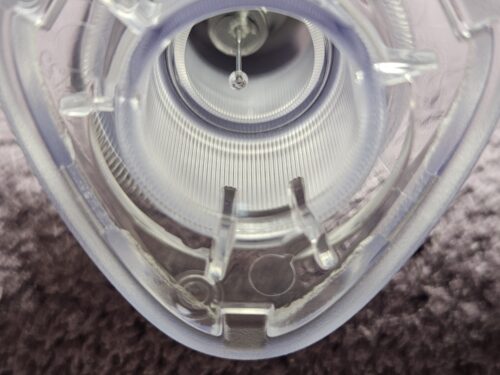
Finding a way to accept these realities can give you a head start on not freaking out when… not if, but when… you have a plateau.
Using the information above, you might have a stall because your body needs to hold onto some energy because it knows you are getting ill, long before you do. Perhaps it knows that you are in pain and need the energy to get through your days at work. There are so many invisible variables about why you might be stalled, it would be impossible to figure any sure answer.
However, if you are eating more, not eating enough protein (and protein first!), drinking sugar soda, having that cookie you haven’t had in ten weeks… maybe eating two cookies? (What can it hurt? It’s only two cookies.) Extra butter, extra sauces, too much salt in your diet, not enough water (a big one), not moving your body enough… any changes, no matter how small can make a world of difference on the scale.
One last thing to remember. The more you weigh, typically, the faster you will lose. As your weight goes down, it will invariably slow. I started at 405 pounds and have lost 180 pounds in 20.5 months. Now that I am only 225, my weight loss has slowed to about 10 pounds a month. As I get smaller, it will slow even more. Many, many people start their GLP-1 journey weighing many pounds less than where I am now. So they could not possibly be expected to lose 20 pounds in one month.
What Control Do We Have Over Stalled Weight Loss?
While it might seem like we have none, and for some that might be so, for most of us, there are a few tried and true things you can at least try.
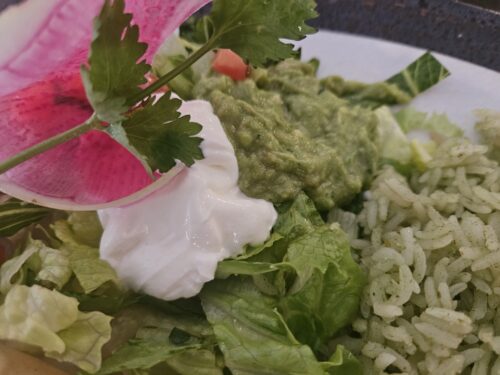
In no particular order:
- Change up your diet for a few days. While protein first really is the best way to get and keep yourself full longer, adding some carbs… good carbs like dark rices, quinoa, vegetable pasta with beans and a little bit of salad dressing, or hummus with whole grain chips. The darker the carbs the better. Even adding some colorful berries like strawberries and blueberries to steel cut oats is a great choice.
- Add carbohydrates. If you eat lots of carbs, change them to the darker ones I mentioned above. These will keep you full longer and also have more fiber in them, so can help if you have any constipation issues. You might also consider switching some of those carbohydrates for protein. I recently found Kodiak Power Waffles. They have 12 grams of protein per two waffle serving. There are loads of new products made with more protein now. At your grocery store, search “Protein Foods” and see what comes up for you. Combining carbs with protein is a way to get both those desires (and needs) met.
- Drink more water. We who are on Mounjaro, Ozempic, or any of the other GLP-1s hear this all the time. So do it already! Get yourself a filtered water jug and fill it to the brim each day. Pros say we should try to drink half an ounce of water per pound that we weigh. At 225 pounds, I strive for 100 ounces a day. I recently stopped drinking Diet Coke (my CKD 3b begged me to), so should be getting closer to my goal than I had been.
- Eat the proper amount of protein. The often repeated requirement about protein is to eat about 1 gram a day per pound that you weigh. However many experts believe that is a tad too much. I encourage you to research this one as well as talk to your endocrinologist and nephrologist (if you have Chronic Kidney Disease), or your care provider and go from there. The USDA has a great Protein Calculator that Harvard University recommends. Not only does protein fill you up, it is crucial for you to keep and add to your muscle mass.
- Move your body! You knew this was coming. What I remind myself is not only am I burning calories when I walk as long as I am able, but I am building muscle. Muscle burns more calories than fat and that in itself, motivates me to move my shrinking butt. Christopher Wharton, PhD, a certified personal trainer and researcher with the Rudd Center for Food Policy and Obesity at Yale University shares his knowledge with Web MD, saying, “When you exercise, you use muscle. This helps build muscle mass, and muscle tissue burns more calories — even when you’re at rest — than body fat. According to Wharton, 10 pounds of muscle would burn 50 calories in a day spent at rest, while 10 pounds of fat would burn 20 calories.” (emphasis mine)

What Are You Going to Do to
Get Your Weight Loss Going Again?
I hope I’ve given you some good ideas of how to get the scale moving again. If, after trying any, or all, of those things, do talk to your doctor. Depending on the dose of GLP-1 medication you are on, you might need to move up a notch. Research shows the more milligrams of medication you are on, over time, you lose more weight. This study was for semaglutide: “Weight loss at 28 weeks approached approximately 7% for patients taking the 1-mg dose and 9.6% for those taking the 2.4-mg dose. Patients without type 2 diabetes achieved higher weight loss outcomes than those with type 2 diabetes, which is also shown in our study.” With tirzepatide, “…change in weight at week 72 , −19.5% with a 10-mg dose, and −20.9% with a 15-mg dose.”
The last comment, my standard admonition, talk to your care provider. Research like a banshee, then present your information to your provider and decide together where to go from there.
Let’s get that scale moving again!
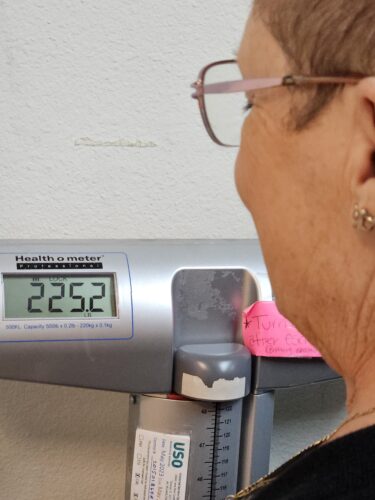
all photos by Barb Herrera


